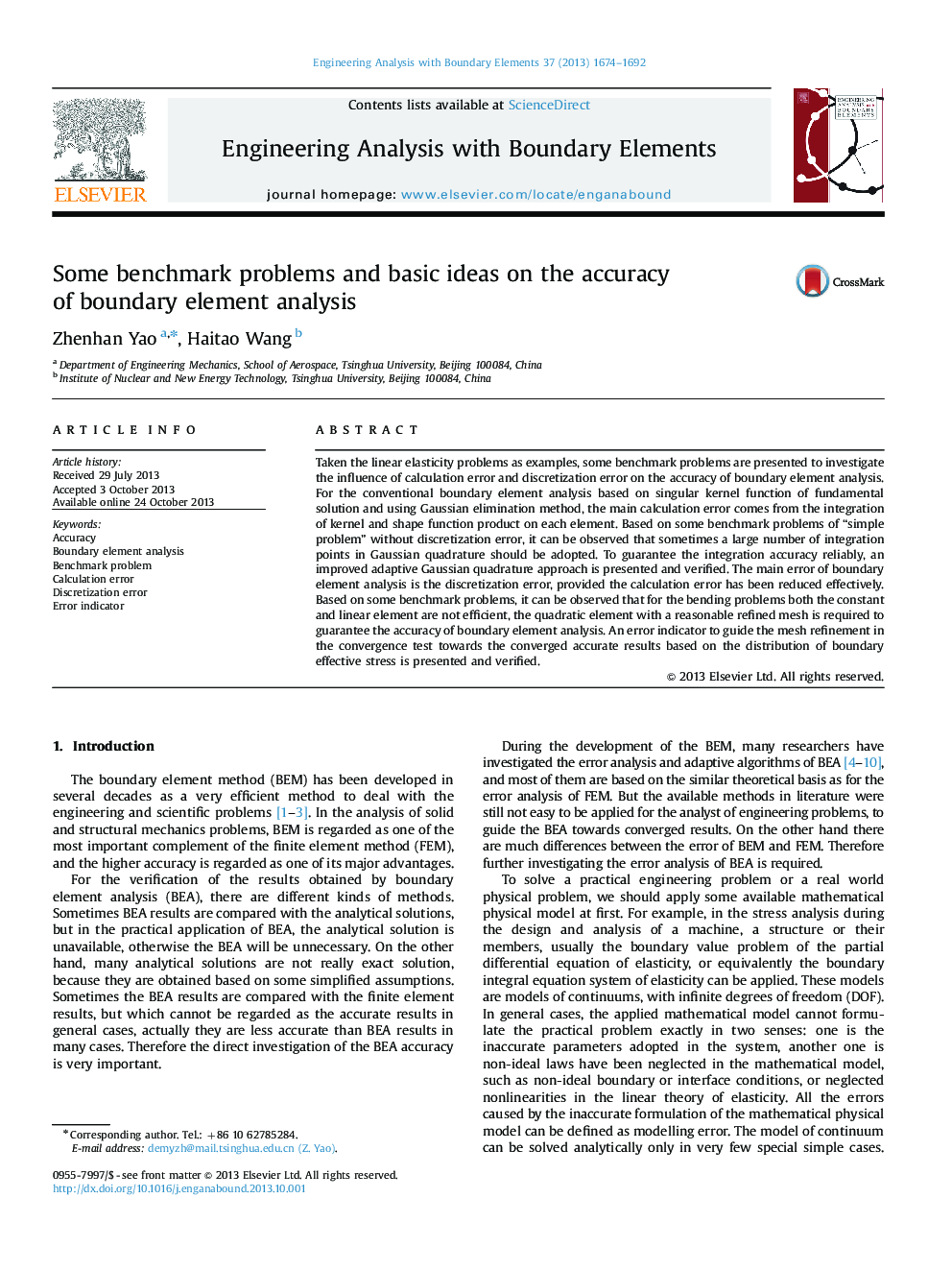| Article ID | Journal | Published Year | Pages | File Type |
|---|---|---|---|---|
| 512491 | Engineering Analysis with Boundary Elements | 2013 | 19 Pages |
Taken the linear elasticity problems as examples, some benchmark problems are presented to investigate the influence of calculation error and discretization error on the accuracy of boundary element analysis. For the conventional boundary element analysis based on singular kernel function of fundamental solution and using Gaussian elimination method, the main calculation error comes from the integration of kernel and shape function product on each element. Based on some benchmark problems of “simple problem” without discretization error, it can be observed that sometimes a large number of integration points in Gaussian quadrature should be adopted. To guarantee the integration accuracy reliably, an improved adaptive Gaussian quadrature approach is presented and verified. The main error of boundary element analysis is the discretization error, provided the calculation error has been reduced effectively. Based on some benchmark problems, it can be observed that for the bending problems both the constant and linear element are not efficient, the quadratic element with a reasonable refined mesh is required to guarantee the accuracy of boundary element analysis. An error indicator to guide the mesh refinement in the convergence test towards the converged accurate results based on the distribution of boundary effective stress is presented and verified.
